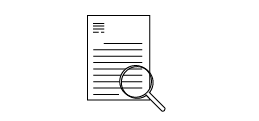7a. What is "Policy" and Why Does it Matter for Population Health?
The Oxford Dictionary defines policy as “a course or principle of action adopted or proposed by an organization or individual.”1 That’s a pretty broad definition for our purposes, so I want to spend a bit of time reviewing the types and levels of policy and their significance for public health.
I will also provide a brief overview of the policy-making process. In order to influence the development of healthy public policies — as some of you may do in your roles as public health practitioners — it’s important to understand how policies are developed.
Walt and Gilson distinguish between systematic or macro policy, which determines the basic characteristics of entire jurisdictions (e.g., income tax or minimum wage rates) and sectoral or micro policy, which concerns more specific types of decision making within a particular sector, such as education (e.g., an anti-bullying policy in an elementary school).2 Given the influence of the broad determinants of health (see Module 2), both systematic and sectoral policy are relevant.
Policy should provide a framework against which proposals can be tested and measured. Policies are necessary if an organization’s or government's actions are to be consistent with one another, or even aimed in the same direction. Without them, an organization's or government’s actions will be unfocused and fragmented.
All organizations and governments have policies, although they may or may not be explicit or written. Ideally, a policy should contain a definition of the problem being addressed, a statement of goals — that is, the desired state of affairs— and at least some broad outlines of the instruments, approaches, and activities by which the goals are to be achieved.3
Types of Health-Related Policy
There are many types of policy:
- Public policy refers to policies enacted by federal, provincial/territorial, or municipal governments. Public policies impacting population health can also be enacted by Boards of Education or local/regional Boards of Health.
- Private policies encompass policies covering privately owned property. These can range from informal, individual policies (e.g., “no smoking in my house!”) to policies adopted by workplaces or corporations (e.g., an employee wellness policy).
- Health care policies govern access to preventive or tertiary (treatment) options, including medications, surgeries and diagnostic/clinical procedures within our health care system.
- Lastly, healthy public policies refer to the range of policies aimed at maintaining or improving the health of a population.4,5
Healthy Public Policies
Healthy public policies promote the health of individuals and communities by:
- making it easier for people to adopt healthy practices;
- making it harder for people to adopt unhealthy practices; and
- creating healthy physical and social environments.5
Broadly speaking, healthy public policies fall into one of three categories, although there is some degree of overlap between them, and they are often used in combination:
- Regulation refers to legislated rules or directives that encourage the performance of healthy behaviours such as wearing seatbelts. Regulations such as the minimum wage also affect population-level access to the social determinants of health such as food and shelter.
- Taxation, the levying of tax on income or products, is arguably the most powerful policy lever for influencing health at the population level.
- Fiscal Measures determine the amount of money allocated to the resources needed to maintain good health, including the social determinants of health, such as income support, education, and public transportation. As such, fiscal measures are an important consideration for healthy public policy.
By now, you may have noticed that the scope of healthy public policies extends well beyond the parameters of the public health sector. In recognition of this fact, health advocates have embraced the concept of health in all policies, which involves collaboration with key sectors affecting health to ensure that health considerations, including health equity, are incorporated into the public policy making process.6
One of your required readings provides a further elaboration of the health in all policies approach.7
Key Players in the Public Policy Process
Policy making is a messy, protracted process that often involves trade-offs and compromises between groups with different interests (e.g., protecting the environment vs. protecting jobs that may damage the environment). As a result, the process of reaching consensus on health-related policies is not always pleasant to witness. A quotation widely attributed to Otto Von Bismarck, the first Chancellor of a unified Germany in the 19th century, translates loosely into:
Laws are like sausages. It is better not to see them being made.
Steven_Kriemadis/E+/Getty Images
Canada, like the United Kingdom and Australia, is characterized by a multi-centric policy system, essentially a marketplace, in which autonomous actors compete.8 Government acts as a referee, guardian of minimum standards, and facilitator of desired actions on the part of the other players. These other players often only choose to participate in the policy making process when a particular policy proposal is to their particular benefit or detriment. Rather than controlling the environment, government must adapt its organization to the existing and emerging environment.
The following chart summarizes the key stakeholders and their roles in the public policy making process within the federal and provincial/territorial levels of government in Canada.
Table 1. Key Actors and their Roles in the Canadian Public Policy Development Process
|
Key Actors
|
Roles in Policy Development Process
|
|

Federal or Provincial/Territorial Elected Government
|
Sets overall (macro) policy direction
|
|

Federal Prime Minister or Provincial/Territorial Premier
|
Key exponent of overall policy direction
Selects cabinet composed of Ministers responsible for setting policy direction in key sectors (e.g., finance, health, agriculture, transportation)
|
|
 Federal or Provincial/Territorial Ministers Federal or Provincial/Territorial Ministers
|
Encourage cabinet and legislature to adopt a given policy
Explain/promote policy to the general public and defend policy against opposition critics as needed
|
|
 Members of the Parliament/Legislature Members of the Parliament/Legislature
|
Vote in favour of legislation-implementing policy (or against, if in opposition)
Can move amendments to proposed policy
|
|
 Ministers’ Executive Assistants Ministers’ Executive Assistants
|
Advise Ministers regarding policy options
Control access to Ministers: serve as “gatekeepers” between Ministers and interest/advocacy groups
|
|

Senior Civil Servants
(Deputy and Assistant Deputy Ministers)
|
Only permanent or semi-permanent players in government
Advise government/Ministers on implementation of government’s agenda, including development of policy options
|
|
 Committees, Task Forces, and Commissions Committees, Task Forces, and Commissions
(e.g., Federal Ministerial Advisory Committee on Poverty, Truth and Reconciliation Commission)
|
Groups with specific knowledge, expertise, and/or lived experience; established by government to provide advice on specific health-related policies
|
|

Policy Research Institutes
(e.g., The Fraser Institute, Canadian Centre for Policy Alternatives)
|
Can serve as important sources of policy analysis and advice
Help to shape public opinion about policy options; however, credibility can be limited due to their accountability to funders, some of whom establish policy research institutes to advance specific ideological agendas
|
|

Interest and Advocacy Groups
- Industry-sponsored
(e.g., Canadian Council of Food Processors, Canadian Beverage Association)
- Professional Associations
(e.g., Canadian Public Health Association)
- Health-Related Not-for-Profit Organizations
(e.g., Heart and Stroke Foundation)
|
Actively lobby government for the development of, or (in some cases) the modification or abandonment of, specific health-related policy options
Sometimes actively consulted by government during the policy making process or called upon to provide advice about health-related policies.
|
|

General Public
|
Relatively limited opportunities to influence health-related policies beyond voting in elections
Can take part in public hearings/deputations arranged by government, often via government-sponsored committees, task forces and commissions
Public opinion (assessed via polling) is a key determinant of overall government priorities
(All Icons: © University of Waterloo)
|
With all of those competing interests shaping healthy public policy, you can begin to appreciate the reasoning behind Bismarck’s sausage analogy. The development of healthy public policy can indeed be messy, but the results can be worth it. As the next section illustrates, policies developed and implemented with the express purposes of promoting and protecting population health can yield impressive results.
References
- Policy. (n.d.). In English oxford living dictionaries. Retrieved from https://en.oxforddictionaries.com/definition/policy
- Walt, G., & Gilson, L. (1994). Reforming the health sector in developing countries: The central role of policy analysis. Health Policy and Planning 9(4), 353–370.
- The Health Communication Unit (THCU). (2004). Developing health promotion policies (Version 1.0). Toronto: THCU at the Centre for Health Promotion, University of Toronto.
- Milio, N. (1981). Promoting Health Through Public Policy. Philadelphia: FA Davis Company.
- World Health Organization (WHO). (1998). Adelaide recommendations on healthy public policy. Second International Conference on Health Promotion, Adelaide, South Australia, 5-9 April 1988. Geneva: WHO. Retrieved from http://www.who.int/healthpromotion/conferences/previous/adelaide/en/index1.html
- World Health Organization (WHO). (2010). Adelaide statement on health in all policies. Geneva: WHO and Government of South Australia. Retrieved from http://www.who.int/social_determinants/hiap_statement_who_sa_final.pdf
- Shankardass, K., Hemsing, C., & Greaves, L. (2017). Health in all policies. In I. Rootman, A. Pederson, KL Frohlich, & S. Dupéré (Eds.), Health Promotion in Canada: New Perspectives on Theory, Research and Practice (4th ed., pp. 343–356). Toronto: Canadian Scholars.
- Dunn, W.N. (1981). Public policy analysis: An introduction (5th ed.). Englewood Cliffs, NJ: Prentice-Hall.